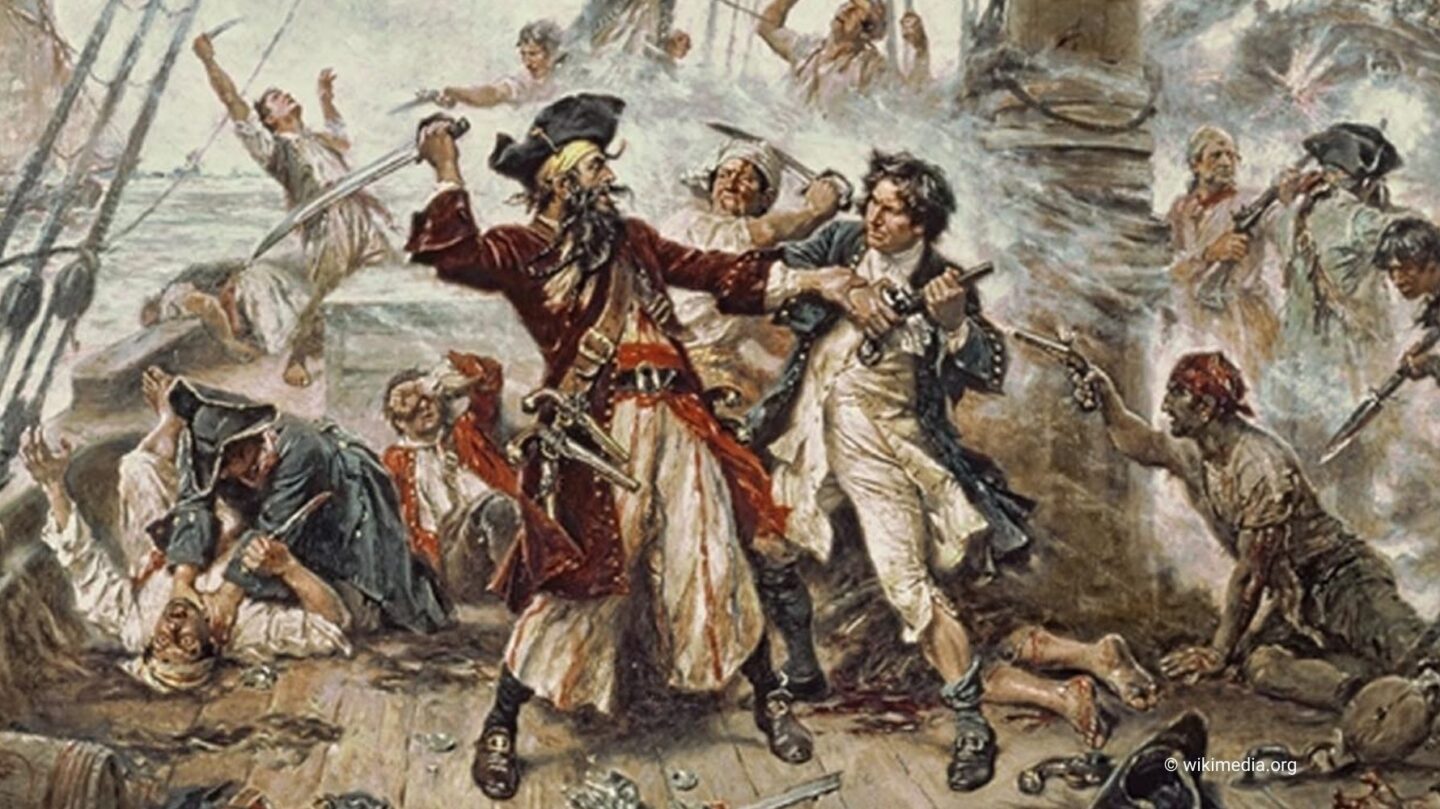The Era of the Golden Age
The Golden Age of Pirates, spanning from the late 1600s to the early 1700s, was a time when piracy flourished on the high seas. This era was driven by global trade, the expansion of colonial empires, and the lure of untold riches transported by ships. Many of the iconic pirates we know today, like Blackbeard, Anne Bonny, and Captain Kidd, operated during this period.
While piracy was most rampant in the Caribbean, its reach extended to the coasts of North America, Africa, and even the Indian Ocean. The pirates of this era were not just swashbuckling adventurers but also complex figures who blurred the lines between villainy and rebellion.
Pirate Life: Fact or Fiction?
Popular culture often portrays pirates as romanticized rogues, living a life of freedom, treasure hunts, and daring battles. But the reality of pirate life was far grittier and less glamorous.
- Treasure: The idea of buried treasure, epitomized by Robert Louis Stevenson’s Treasure Island, is largely a myth. While pirates did steal valuable cargo, most of it was mundane—like sugar, spices, or textiles. Gold and jewels were rare, and pirates typically sold stolen goods quickly to fund their operations.
- Pirate Ships: The image of the grand pirate ship flying a skull-and-crossbones flag (the Jolly Roger) is partly accurate. Pirates did fly intimidating flags to scare their targets into surrendering without a fight, but most pirate ships were small and fast, designed for quick getaways rather than luxury.
- Democracy at Sea: Surprisingly, many pirate crews operated democratically. Captains were often elected, and decisions like dividing loot or planning raids were made collectively. This sense of equality and shared power made pirate life appealing to sailors who had suffered under harsh naval commanders.
The Legends of Infamous Pirates
Several figures from the Golden Age of Piracy have become legendary, but their true stories are often shrouded in myth:
- Blackbeard (Edward Teach): Known for his fearsome appearance, with fuses in his beard to create an intimidating aura, Blackbeard was a master of psychological warfare. However, he preferred to scare ships into surrender rather than engage in bloody battles. His reign of terror ended in 1718 when he was killed in a dramatic battle with British naval forces.
- Anne Bonny and Mary Read: These two women defied the norms of their time by joining pirate crews. While their exploits are often sensationalized, they were skilled fighters who earned the respect of their male counterparts.
- Captain Kidd: Once a legitimate privateer hired to attack enemy ships, Kidd was accused of piracy and executed in 1701. His trial and death helped fuel the perception of pirates as ruthless criminals.
The Decline of the Golden Age
The Golden Age of Pirates began to wane in the early 18th century as nations cracked down on piracy. Naval patrols increased, and governments offered pardons to pirates willing to give up their trade. The introduction of stronger maritime laws and harsher punishments further discouraged piracy.
The capture and execution of key pirate figures, combined with diminishing opportunities for loot, marked the end of this era. By the mid-1700s, piracy had largely faded as a significant threat to global trade.
Truth vs. Legend
While the Golden Age of Pirates was far less glamorous than popular culture suggests, its stories continue to captivate us. The legends of daring outlaws and hidden treasures remind us of a time when the seas were a lawless frontier. Beneath the myths lies a fascinating history of rebellion, survival, and the pursuit of freedom—a legacy that keeps the spirit of piracy alive in our imaginations.
